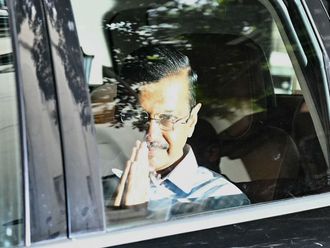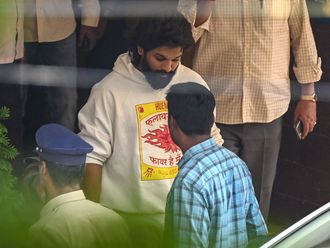One big takeaway from India’s recent assembly elections is the failure of the Congress party’s caste card. The demand for a caste census was supposed to be the gamechanger for the opposition, not just for the state polls but also for the 2024 Lok Sabha election. It bombed.
OBCs, or other backward castes, have voted in huge numbers for the BJP in the Hindi heartland states. In fact, the Congress party’s aggressive strategy of focusing mostly on OBC votes in Chhattisgarh appears to have cost them the critical tribal vote in the state, which went to the BJP.
The results have forced the opposition to return to the drawing board. Bihar Chief Minister Nitish Kumar first mooted the demand for a caste census, and it gained momentum at the national level. Congress leader Rahul Gandhi threw his weight behind it, hoping that the caste card would be the googly that would stump the BJP’s Hindutva plank. But 2023 is not 1990 when the Mandal agitation changed the course of Indian politics.
The Lok Sabha polls are primarily a one-on-one contest between the Congress and the BJP in the Hindi heartland. The Congress needs to find a way to reach out to voters beyond the caste census.
That may explain why the opposition camp suddenly pushed Congress President Mallikarjun Kharge’s name as the prime ministerial candidate. He is a Dalit. Though he has brushed aside the suggestion as the face of the alliance, it will be interesting to see how this plays out.
Will the caste census have an impact beyond Bihar, where the politics of social justice and caste still resonate deeply? One major factor is the nature of the BJP. Before 2014, the BJP was seen as an upper-caste party with support from the middle class. Today that has significantly changed, with both upper castes and OBCs forming a strong support base for the party.
Data compiled by Lokniti CSDS shows that the BJP’s big victory in the 2019 general election was fuelled by support from the OBCs. The party had an all-India vote share of 37.6 per cent, almost double its vote share in 2009. They did it by retaining their upper caste support and expanding their OBC base. This has come mainly at the cost of the Congress and regional parties in Bihar.
How BJP fought the caste issue
The Lokniti CSDS data shows that the OBC vote share for the BJP has only increased in national elections — from 34 per cent in 2014 to 44 per cent in 2019. Much of this support for the BJP has come from lower backward castes from among the OBCs.
Prime Minister Narendra Modi has been at the forefront of the BJP’s OBC push. The party has highlighted his OBC roots, and his counter to the caste census issue was to harp on one point: he considers the poor, the youth, women and farmers the “biggest castes” whose upliftment is crucial for the country’s development.
His government’s social welfare schemes since 2014 have targeted the poorest with pucca houses, drinking water schemes, toilets, cheaper cooking gas and direct benefit transfers. This was a huge factor in Modi’s big win in 2019.
For the BJP, the beneficiaries of their social welfare schemes — called labarthis — are a crucial vote bank. The idea is to woo the OBC vote under the larger Hindutva umbrella. Political representation has been another key factor. More than one-third of the BJP’s MPs are from OBC communities. And the traditional upper caste vote remains intact.
Which is Congress’s problem? The grand old party seems to have given up trying to woo upper castes. Under Indira Gandhi, the party had the backing of a coalition of upper castes, OBCs, SC/STs and Muslims. It still has a good share of the SC/ST vote, but the OBCs are voting in larger numbers for Modi, especially in the Hindi heartland, which is crucial to stake power at the Centre.
The Lok Sabha polls are primarily a one-on-one contest between the Congress and the BJP in the Hindi heartland. The Congress needs to find a way to reach out to voters beyond the caste census. 2024 just got more challenging for the opposition.








_resources1_16a45059ca3_small.jpg)
